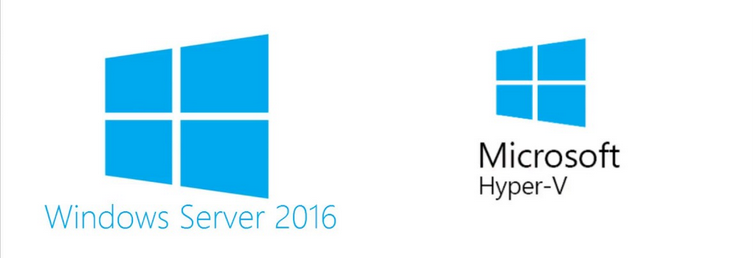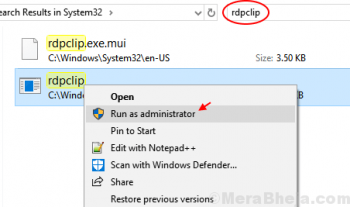Flameshot is used for taking a screenshot that is open-source and available for almost all Linux-based distributions as well as for Windows and macOS.
This application is developed by using the QT5 and C++ languages.
The most attractive features of the flameshot application including edit images, upload images to Imgur, supports both graphical and command-line mode, customization, and import configuration.
Here at LinuxAPT, as part of our Server Management Services, we regularly help our Customers to perform Software Installation tasks on CentOS Linux Systems.
In this context, we shall look into how to install the flameshot application on CentOS 8 system.
Methods to install flameshot application on CentOS
Before proceeding with this installation procedure, ensure that all administrative tasks and commands are performed with the sudo or root privileges.
Also, Before installing the flameshot, it is recommended to check the latest available version of Flameshot that is compatible with your operating system.
Flameshot can be installed on CentOS 8 using the following different methods:
1. Install Flameshot using yum package manager
2. Install Flameshot by downloading the rpm package
3. Install Flameshot via Snap
1. Install Flameshot using the yum package manager
To begin, Open the command-line window terminal from the left sidebar of your CentOS 8 system.
Flameshot can be installed on your CentOS 8 system by using the 'yum' package manager.
It is available in the default yum repository.
So, just type the following command to install flameshot on CentOS 8:
$ sudo dnf install flameshotPress 'y' and then 'Enter' key to continue with the installation process.
The above-mentioned command installs the flameshot along with all dependencies on your CentOS 8 system.
2. Install Flameshot by downloading the rpm package
This method is recommended as compared to the above because through this method, you can easily get and install the latest version of flameshot on your system.
However, to install flameshot using this method would complete into the following two steps, which are given below.
i. Download the flameshot rpm package
First, download the flameshot package for CentOS 8 distribution. As we know that, CentOS supports the rpm packages for installing any software.
However, if you have any other distribution then, download the flameshot package according to your operating environment.
Download the rpm flameshot package from Github by using the following 'wget' command:
$ wget https://github.com/flameshot-org/flameshot/releases/download/v0.9.0/flameshot-0.9.0-1.fc32.x86_64.rpmii. Install Flameshot package on CentOS 8
Install the downloaded rpm package locally on your system by running the following command:
$ rpm -i flameshot-0.9.0-1.fc32.x86_64.rpmThe error may arise due to the lack of some required dependencies.
So, install all the needed dependencies by using the following commands:
$ sudo dnf install gcc-c++ cmake qt5-qtbase-devel qt5-linguist$ sudo dnf install qt5-qtbase qt5-qtsvg-develFlameshot can also install by enabling the snapd application on your CentOS system.
3. How to Enable snaps on CentOS and install Flameshot ?
Snaps are applications packaged with all their dependencies to run on all popular Linux distributions from a single build. They update automatically and roll back gracefully.
i. Enable snapd
Snap is available for CentOS 7.6+, and Red Hat Enterprise Linux 7.6+, from the Extra Packages for Enterprise Linux (EPEL) repository.
The EPEL repository can be added to your system with the following command:
$ sudo yum install epel-releaseii. Snap can now be installed as follows:
$ sudo yum install snapdiii. Once installed, the systemd unit that manages the main snap communication socket needs to be enabled:
$ sudo systemctl enable --now snapd.socketiv. To enable classic snap support, enter the following to create a symbolic link between /var/lib/snapd/snap and /snap:
$ sudo ln -s /var/lib/snapd/snap /snapEither log out and back in again, or restart your system, to ensure snap’s paths are updated correctly.
v. Install Flameshot
To install Flameshot, simply use the following command:
$ sudo snap install flameshotHow to Launch flameshot on CentOS 8 ?
Once the flameshot application is installed on your system, launch it using the application search bar or from the application menu.
Type 'flameshot' in the search bar and the searching result will show on the desktop.
Now, click on the icon and use this application based on your needs.
How to Uninstall flameshot from CentOS 8 ?
After using this flameshot application, you can uninstall or remove the flameshot application by using the following command:
$ sudo yum remove flameshotComplete the removal process by typing 'y' and then hit 'Enter'.
[Need urgent assistance in fixing missing packages in Linux Systems? We can help you. ]
Conclusion
This article covers how to install the flameshot application on CentOS 8.
You will also learn how you can remove it from your CentOS 8 if you don’t need more on your system.
Main features of flameshot includes:
1. Supports graphical and CLI mode.
2. Edit images instantly.
3. Image uploads to Imgur.
4. Export and import configuration.
5. Easy to use and customizable.
To Install Flameshot in Linux:
Flameshot can be installed using package managers. Before installing through this method make sure you verify the version that ships with your OS:
$ sudo dnf install flameshot # Rhel, Centos, Fedora$ sudo apt install flameshot # Debian, Ubuntu-based distro OR
# Ubuntu based distribution
$ wget https://github.com/flameshot-org/flameshot/releases/download/v0.9.0/flameshot-0.9.0-1.ubuntu-20.04.amd64.deb$ dpkg -i flameshot-0.9.0-1.ubuntu-20.04.amd64.deb# Rhel based distribution
$ wget https://github.com/flameshot-org/flameshot/releases/download/v0.9.0/flameshot-0.9.0-1.fc32.x86_64.rpm$ rpm -i flameshot-0.9.0-1.fc32.x86_64.rpm
This article covers how to install the flameshot application on CentOS 8.
You will also learn how you can remove it from your CentOS 8 if you don’t need more on your system.
Main features of flameshot includes:
1. Supports graphical and CLI mode.
2. Edit images instantly.
3. Image uploads to Imgur.
4. Export and import configuration.
5. Easy to use and customizable.
To Install Flameshot in Linux:
Flameshot can be installed using package managers. Before installing through this method make sure you verify the version that ships with your OS:
$ sudo dnf install flameshot # Rhel, Centos, Fedora$ sudo apt install flameshot # Debian, Ubuntu-based distro OR
# Ubuntu based distribution
$ wget https://github.com/flameshot-org/flameshot/releases/download/v0.9.0/flameshot-0.9.0-1.ubuntu-20.04.amd64.deb$ dpkg -i flameshot-0.9.0-1.ubuntu-20.04.amd64.deb# Rhel based distribution
$ wget https://github.com/flameshot-org/flameshot/releases/download/v0.9.0/flameshot-0.9.0-1.fc32.x86_64.rpm$ rpm -i flameshot-0.9.0-1.fc32.x86_64.rpm











